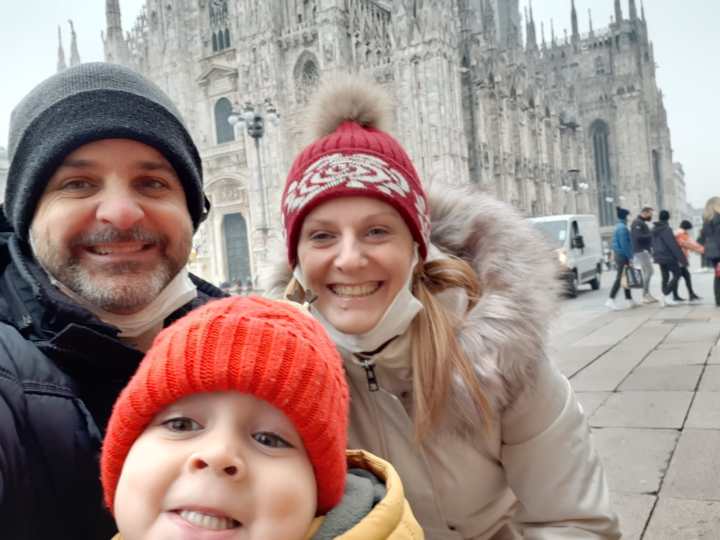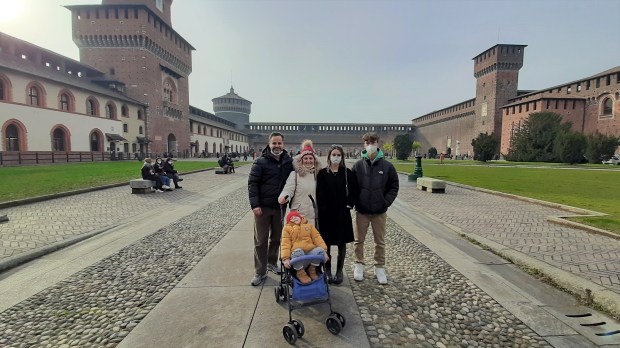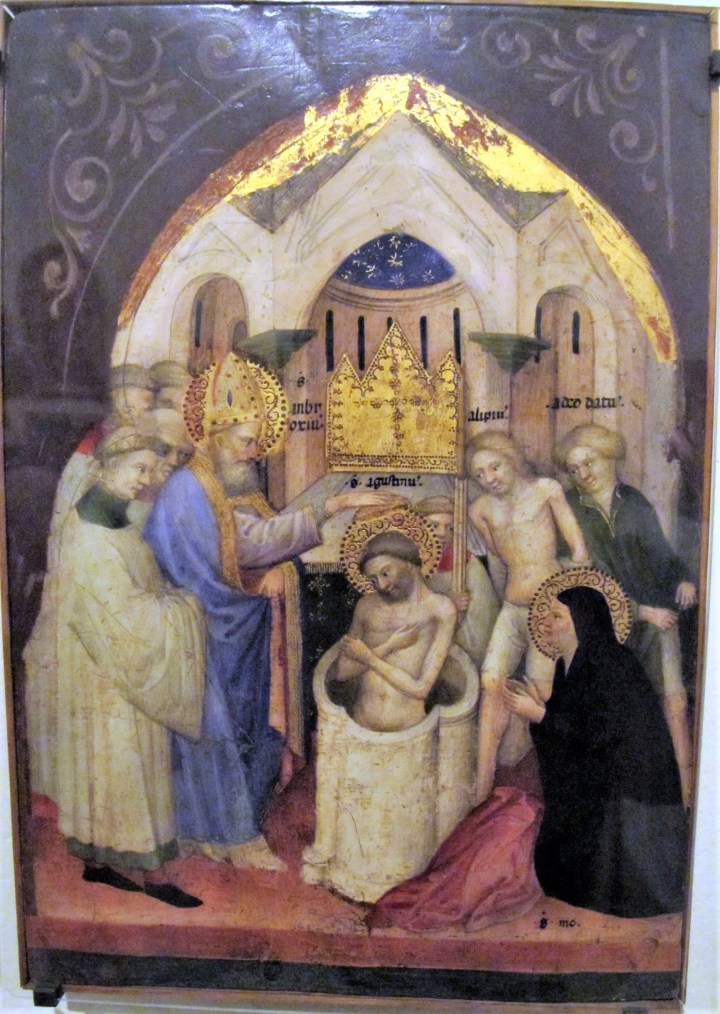I recently spent five days in Milan with my wife, our preschooler, two teenagers, and daughter’s boyfriend. While keeping track of everyone, and despite the intensity of the city, dodging Omicron, and ever-changing rules governing the pandemic, I managed to find some retreat time.
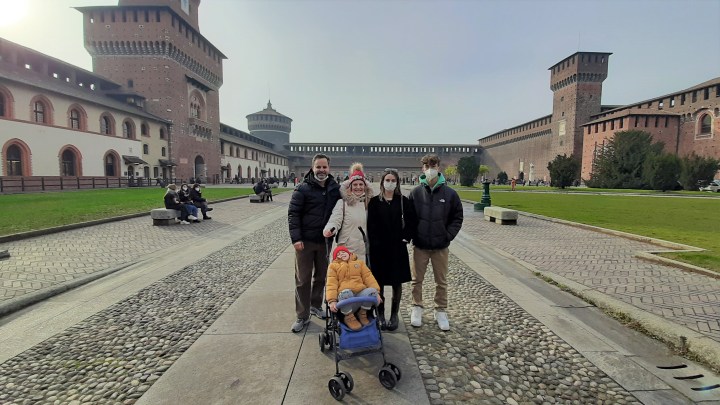
Milan today is known for its worldliness. It is a crowded city, second in population only to Rome. It is also a modern, economic powerhouse renowned for finance, art, fashion and design, education, and media. All this makes for one busy place.
At the same time, Italy’s capital city of Lombardy has a long religious tradition. Two of the four Latin Fathers and Doctors of the Church have a close connection to Milan.
St. Ambrose, one of the most influential ecclesiastical figures of the 4th century, sat on its episcopal seat from 374-397. A young, searching St. Augustine was in Milan serving in a government post when he came under the influence of Ambrose and his sermons. He converted to the faith and in 387 was baptized by Ambrose himself during the Easter Vigil Mass in Milan’s cathedral.
So influential was the legacy St. Ambrose left the Catholic Church that the Archdiocese of Milan still has its own unique liturgy: the Ambrosian Rite. It is one of the few liturgical rites in the western Catholic world distinct from the ordinary Roman rite.
While I was looking forward to a personal pilgrimage in Milan, my family had other expectations. In fact, we ended up in Milan as a sort of truce. If I had it my way, my wife and I would spend all our vacations in a hermitage. Our kids, though religious, have different ideas about a vacation. So we promised the possibility of some shopping and sightseeing in addition to the requisite visits to museums and churches.
Thus, our stay involved some finagling. To our daughter, “If you come with us to the Ambrosian Library, we’ll go to Chanel.” To our older son, “If you come with us to the Brera painting gallery, we’ll go with you to the official Inter soccer merchandise store.” Even to our preschooler, “If you don’t have a temper tantrum at DaVinci’s Last Supper, we will take you to the newly opened FAO Schwarz store and buy you a toy.”
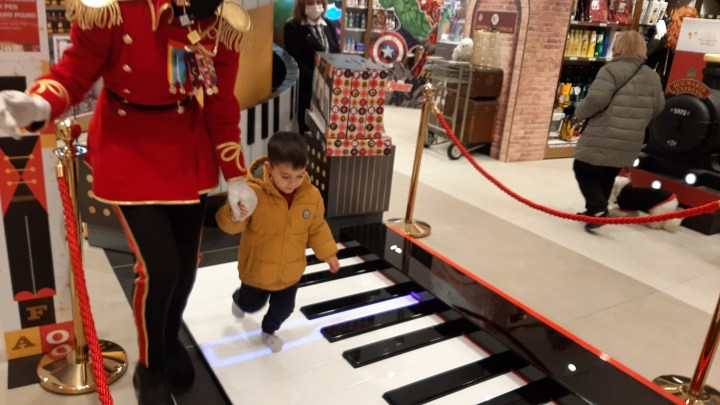
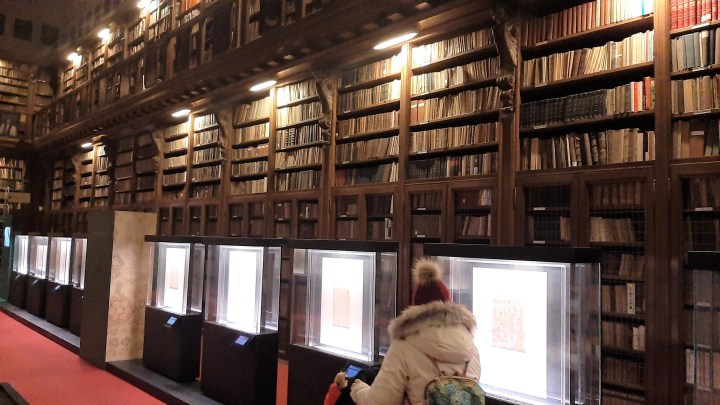
Though I had been to Milan before, this was the first time I spent a significant amount of time there. Though it traces its origins to the Roman era and was important throughout the Middle Ages,90% of the city was destroyed during World War II. As a result, it was rebuilt as a modern city. Some of the churches and old palaces survived and are now like enclaves of religion and history surrounded by 20th-century urban sprawl.
The storied Duomo, the Cathedral, enjoys a prominent position in the center of the town. In fact, the streets and neighborhoods radiate out from it in a circular, hub-and-spoke pattern.
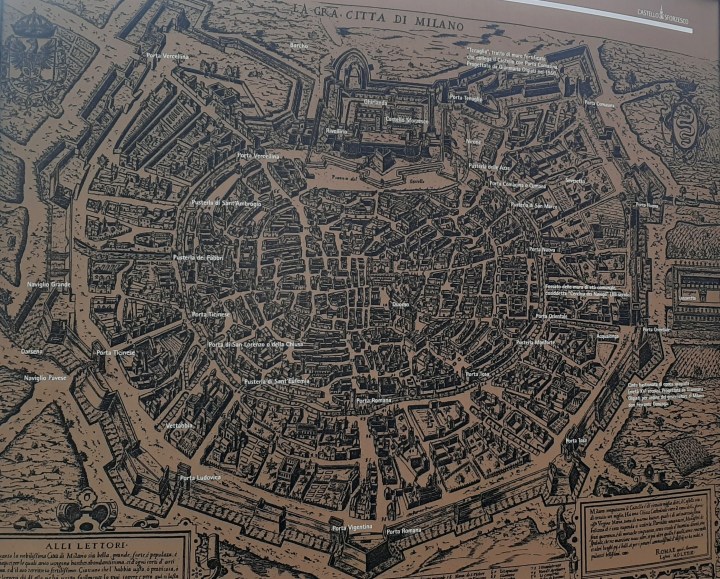
At the same time, it is a worldly city. On the other side of the large square is a Times Square-like mega screen from which Chanel displays advertisements of a more sensual and consumerist nature.
As the screen is directly facing the façade of the Duomo, one wonders if it was positioned that way purposely, as if a challenge – in the same way mosques were placed directly across the square from the Church of the Nativity in Bethlehem in the Holy Land or upon arriving at the Church of the Holy Sepulchre in Jerusalem. More likely, in line with secularism, which is largely indifferent to religion, the fashion brand put their advert in the square simply to reach more people.
Adjacent to the Duomo is the famed Galleria – lined with fashion brands such as Ferragamo, Swarosky, and Prada. The clothing styles in the shop windows seemed more subdued and less outlandish this year. Perhaps the pandemic affected the designers’ mindset. The shoes were cheaper, too. The men’s shoes were only €800 ($900). The last time I was here, they were around €2000 ($2250).
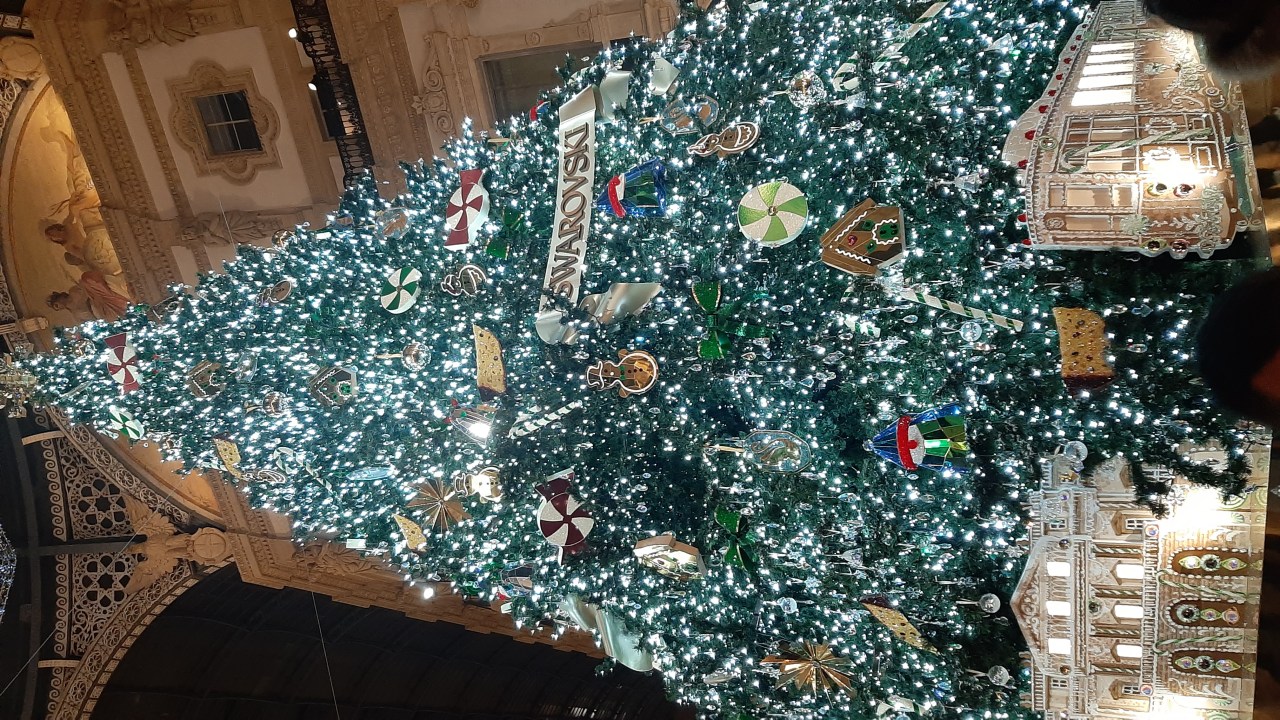
Even our visit to the storied Duomo appeared influenced by materialism. In order to enter, the cost was €5 per person, including adolescents. Thus, the cost for my family (and the boyfriend) was €25 ($30). I understand the need for maintenance and security, but charging to enter churches is not good evangelization. (To be fair, we did not have to pay to go to Mass, which we did, on the feast of St. Stephen.)
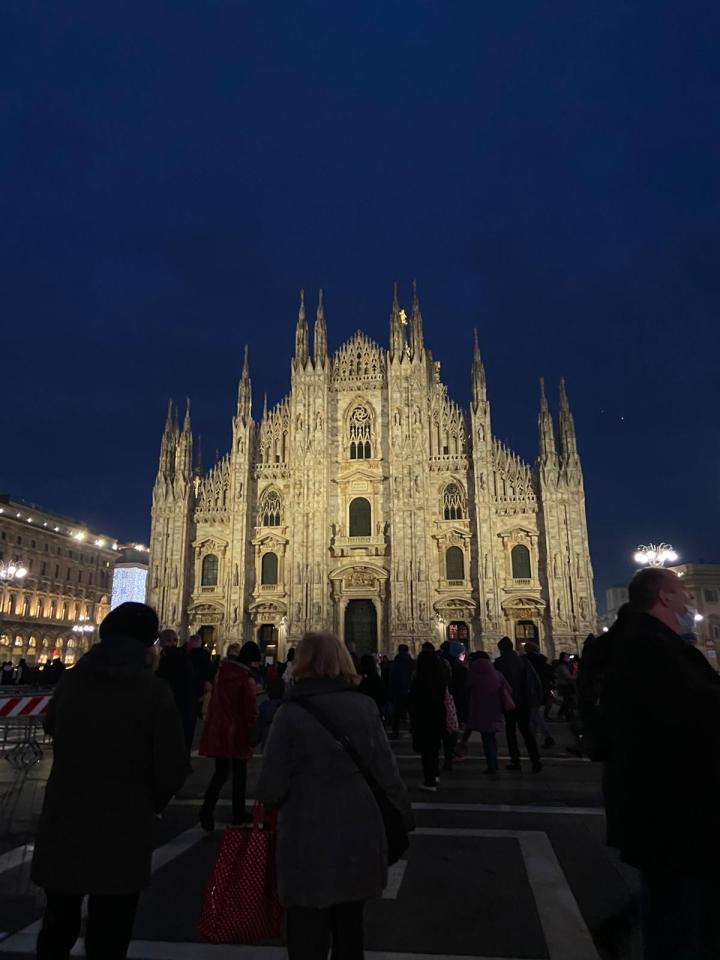
Despite all the secularism, I soon found a spiritual haven in the Church of St. Ambrose not far from our Airbnb. I got up early one morning and arrived just as the church was opening. I was the only person there. It was like a quiet oasis, devoid of the external hubbub of the city.
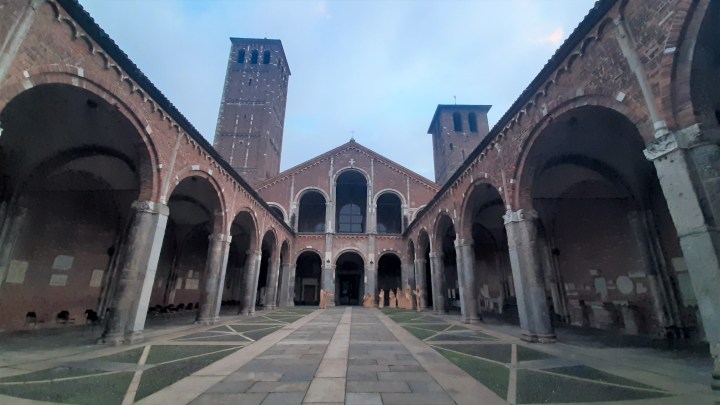
The church was built by St. Ambrose himself in an area where martyrs had been buried during the Roman persecutions. It was one of four he built in Milan to combat Arianism and bolster Nicene teaching. He filled the church with orthodox symbolism and imagery, still present in the stunning mosaics in the apse.
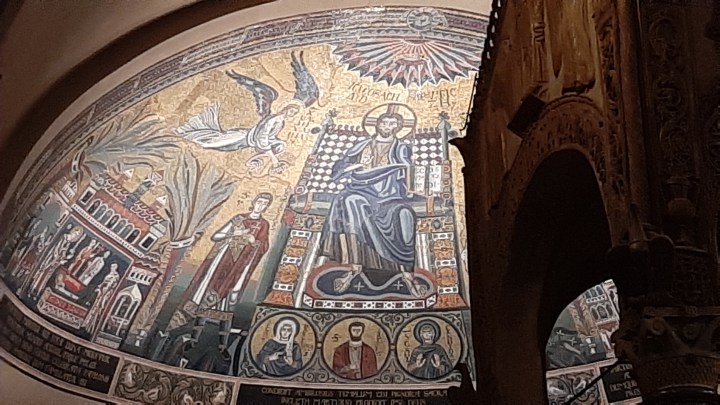
The remains of St. Ambrose can be visited in the crypt. He is lying elevated between two early martyrs, vested in the bishop’s miter. There is something powerful in sitting in the presence of one of the most influential bishops in the history of the Catholic Church. A peace emanated from his relics and from the basilica at large, and I returned several times during my stay in Milan.
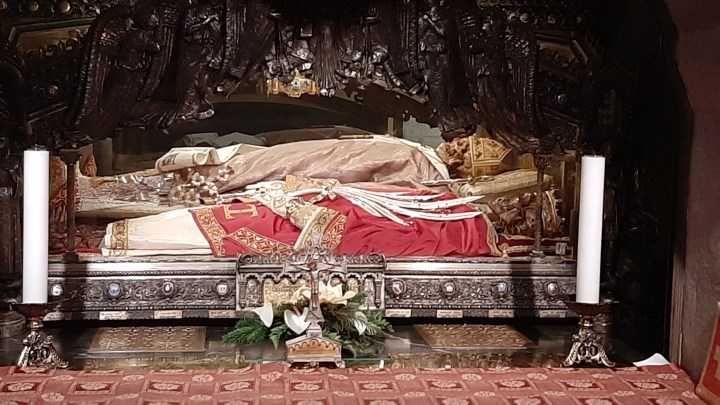
The next morning, I attended a daily Mass at the Basilica of San Lorenzo Maggiore. It appeared identical to the ordinary Roman rite until the Gospel reading. Only then did I realize the priest was celebrating according to the Ambrosian Rite. The Nicene Creed was said after the Alleluia and before the Gospel was read.
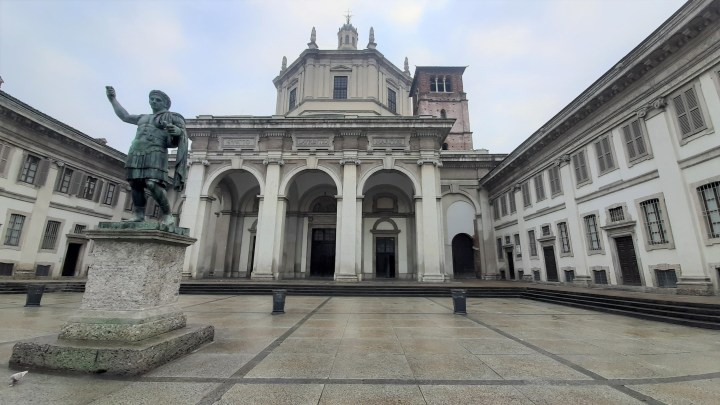
The Sunday Mass we attended on St. Stephen’s feast was also celebrated according to the Ambrosian Rite. On the surface, it, too, appeared little different from the Roman rite. The Kyrie was chanted twice and the order of the Mass was slightly different. Not everyone knew when to stand or sit, as there were numerous tourists, particularly around the reading of the Gospel. The sign of peace took place earlier, the creed was read earlier, and the prayers of the faithful took place earlier.
After speaking with a priest, I understood that the differences are more pronounced once you get deeper into the Missal, which is unique and more closely aligned with the eastern rites. The Ambrosian Rite has its own songs and hymns, some written by St. Ambrose himself. It also has its own cycle of readings, prayers, sacramentary, and lectionary. This is owed to the greatness of St. Ambrose.
We came home from our short stay in Milan with more than we left. We not only had some shopping bags and unique museum ticket stubs, our family was drawn closer together. They came away happier, and so did I. We each grew in culture and spirituality and in our love for one another and our faith.
